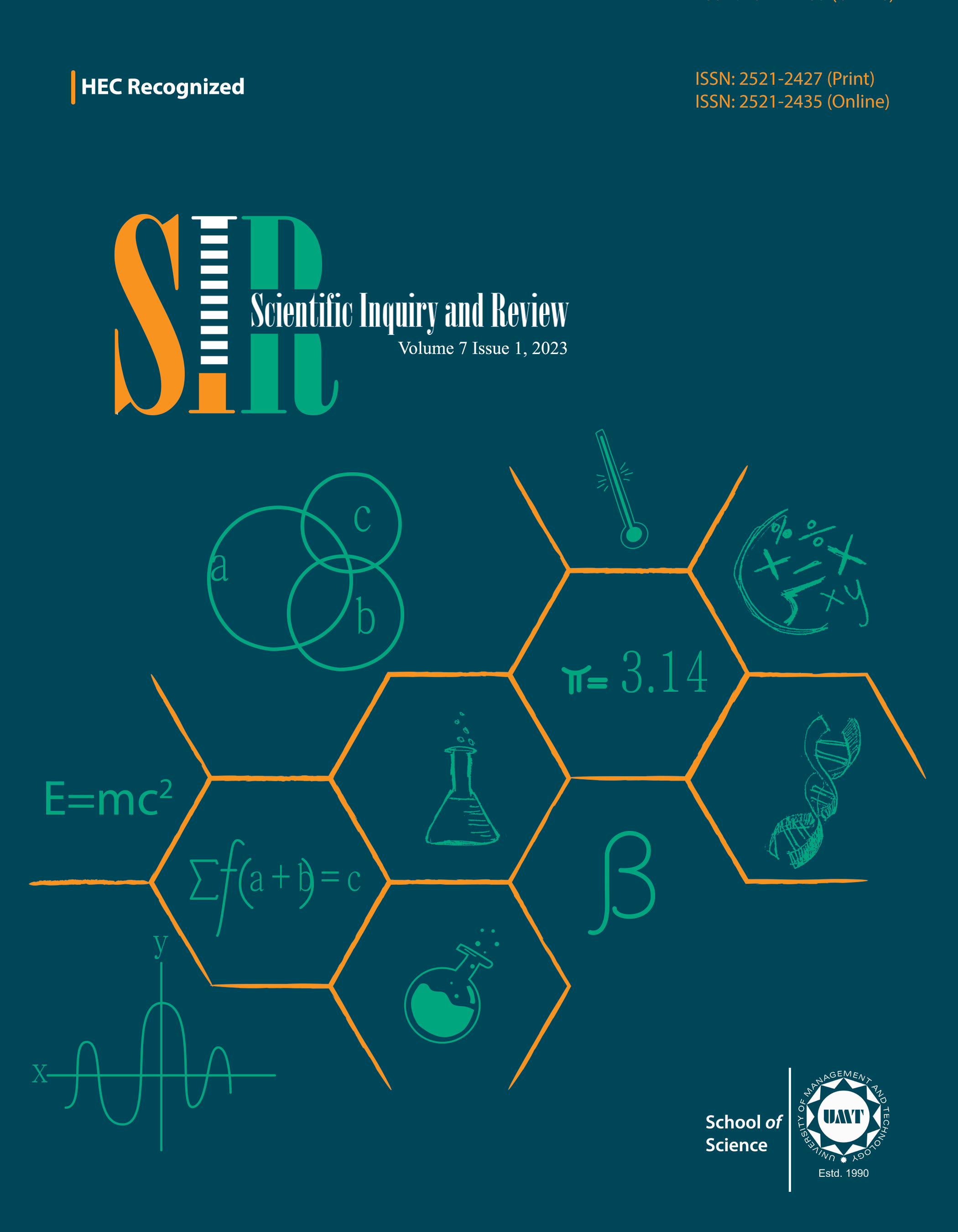Transmission Analysis of Hepatitis B Epidemic Model using Standard and Non-standard Schemes
Abstract
 Abstract Views: 21
Abstract Views: 21
Mathematical modeling is a vast field that has interdisciplinary implications for research. These models help to investigate the basic dynamics and quantitative behavior of infectious diseases that affect human beings, such as COVID-19, hepatitis B virus (HBV), and human immunodeficiency virus (HIV). The current study investigates the spread of HBV by using the basic virus model. In order to determine the stability of disease-free and endemic equilibria, the basic reproduction number is determined. The convergence and divergence of disease-free and endemic equilibria are demonstrated by using standard finite difference (SFD) and non-standard finite difference (NSFD) schemes. Arguably, SFD schemes, namely Euler and Runge-Kutta order four (RK-4) schemes, converge for lower step sizes, while the NSFD scheme converges for all step sizes. The latter is a strong, efficient, and reliable method that shows a clear picture of the continuous model. All the results are validated using numerical simulations in order to better comprehend the dynamics of the disease. The theoretical and numerical findings in this work can be applied as a useful tool for tracking the prevalence of HBV infectious disease.
Downloads
References
Hussain MZ, Hussain M. Visualization of data preserving monotonicity. Appl Math Comput. 2007;190(2):1353–1364. https://doi.org/10.1016/j.amc.2007.02.022
Sarfraz M, Hussain MZ, Hussain M. Modeling rational spline for visualization of shaped data. J Numer Math. 2013;21(1):63–87. https://doi.org/10.1515/jnum-2013-0003
Hussain MZ, Sarfraz M, Hussain M. Scientific data visualization with shape preserving rational cubic interpolation. Eur J Pure Appl Math. 2010;2:194–212.
Chand AKB, Vijender N, Navescues MA. Shape preserving of scientific data through rational fractal splines. Calcolo. 2014;51: 329–362. https://doi.org/10.1007/s10092-013-0088-2
Cripps RJ, Hussain MZ. Monotone cubic Hermite interpolant. Appl Math Lett. 2012;25(8):1161–1165.
https://doi.org/10.1016/j.aml.2012.02.050
Floater MS, Pena JM. Monotonicity preserving on triangles. Math Comput. 2000;69(232):1505–1519.
https://doi.org/10.1090/S0025-5718-99-01176-X
Hussain MZ, Sarfraz M. Monotone piecewise rational cubic interpolation. Int J Comp Math. 2009;86(3):423–430.
https://doi.org/10.1080/00207160701595145
Barnsley MF. Fractal functions and interpolation. Constr Approx. 1986;2:303–329.
https://doi.org/10.1007/BF01893434
Barnsley MF, Harrington AN. The calculus of fractal interpolation functions. J Approx Theory. 1989;57:14–34.
https://doi.org/10.1016/0021-9045(89)90080-4
Balasubramani N. Shape preserving rational cubic fractal interpolation function. J Comput Appl Math. 2017;319:277–295. https://doi.org/10.1016/j.cam.2017.01.014
Arooj T, Hussain MZ, Hussain F. Scientific Data Visualization via Hybrid Model based on Fractal Spline Interpolation. Punjab Univ J Math. 2019;51(9):123–136.
Sarfraz M. A rational cubic spline for visualization of monotonic data. Comput Graph. 2000;24:509–516.
https://doi.org/10.1016/S0097-8493(00)00053-4
Sarfraz M. A rational cubic spline for visualization of monotonic data: an alternative approach. Comput Graph. 2003;27:107–121. https://doi.org/10.1016/S0097-8493(02)00249-2
Lamberti P, Manni C. Shape preserving functional interpolation via parametric cubics. Numer Algor. 2001;28:229–254.
Sarfraz M, Hussain MZ, Hussain M. Modeling rational spline for visualization of shaped data. J Numer Math. 2013;21(1):63–87. https://doi.org/10.1515/jnum-2013-0003
Beliakov G. Monotonicity preserving approximation of multivariate scattered data. BIT Numer Math. 2005;45(4):653–677. https://doi.org/10.1007/s10543-005-0028-x
Sarfraz M, Hussain MZ, Hussain F. Shape preserving curves using quadratic trigonometric splines. Appl Math Comput. 2015; 265:1126–1144. https://doi.org/10.1016/j.amc.2015.05.131
Hussain MZ, Hussain F, Sarfraz M. Shape preserving positive trigonometry spline curves. Iran J Sci Technol Trans Sci. 2018; 42:763–775. https://doi.org/10.1007/s40995-016-0056-1
Ahmad B, Perviaz A, Ahmad O, Dayan F. Numerical solution of fourth order homogeneous parabolic partial differential equations using non-polynomial cubic spline method (NPCSM). Sci Inquiry Rev. 2021;5(4):19–37.
https://doi.org/10.32350/sir/54.02
Ahmad B, Perviaz A, Ahmad MO, Dayan F. Solution of parabolic partial differential equations via non-polynomial cubic spline technique. Sci Inquiry Rev. 2021;5(3):60–76. https://doi.org/10.32350/sir/53.05
Copyright (c) 2023 Ihsan Ullah Khan, Muhammad Irfan, Azhar Iqbal

This work is licensed under a Creative Commons Attribution 4.0 International License.






